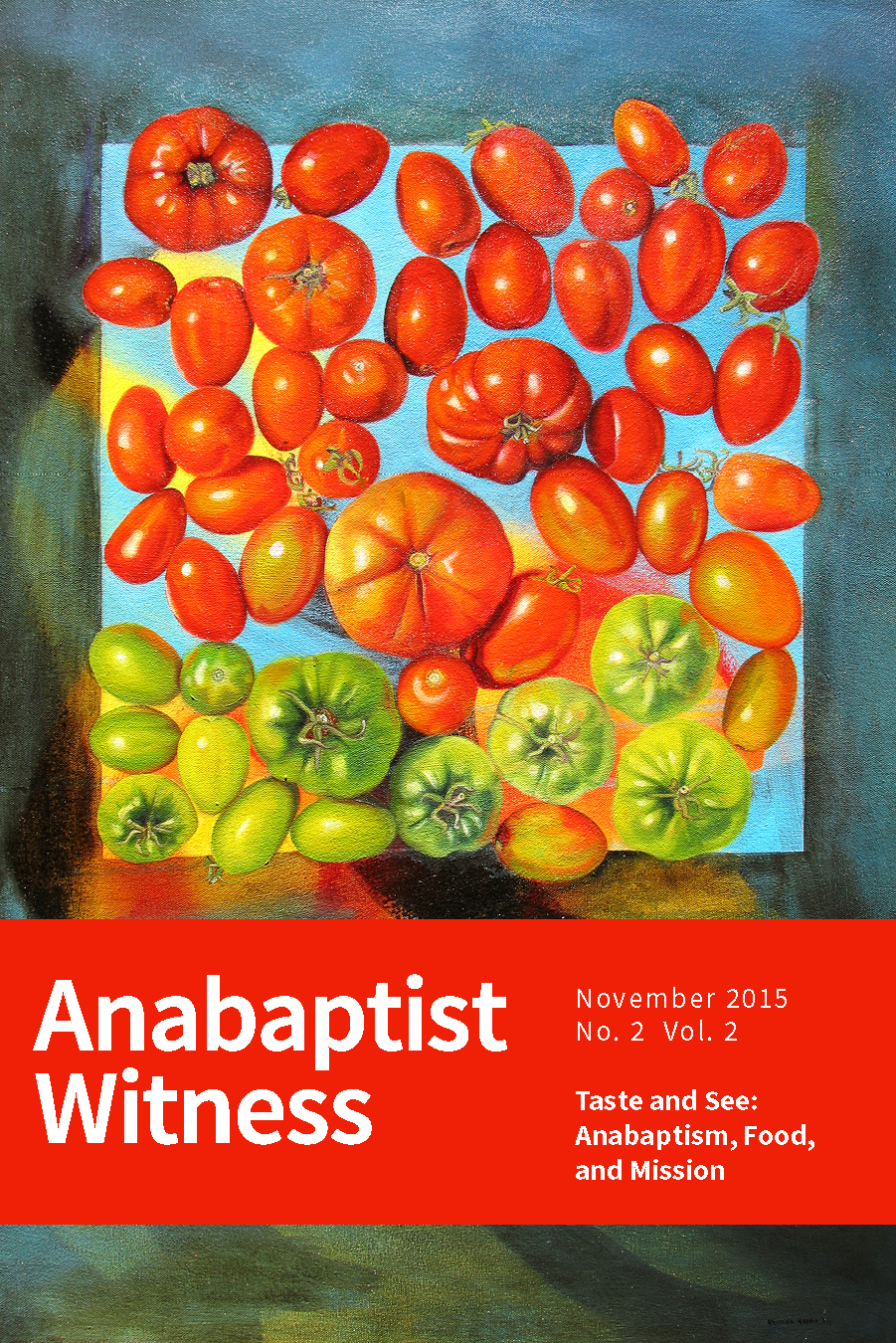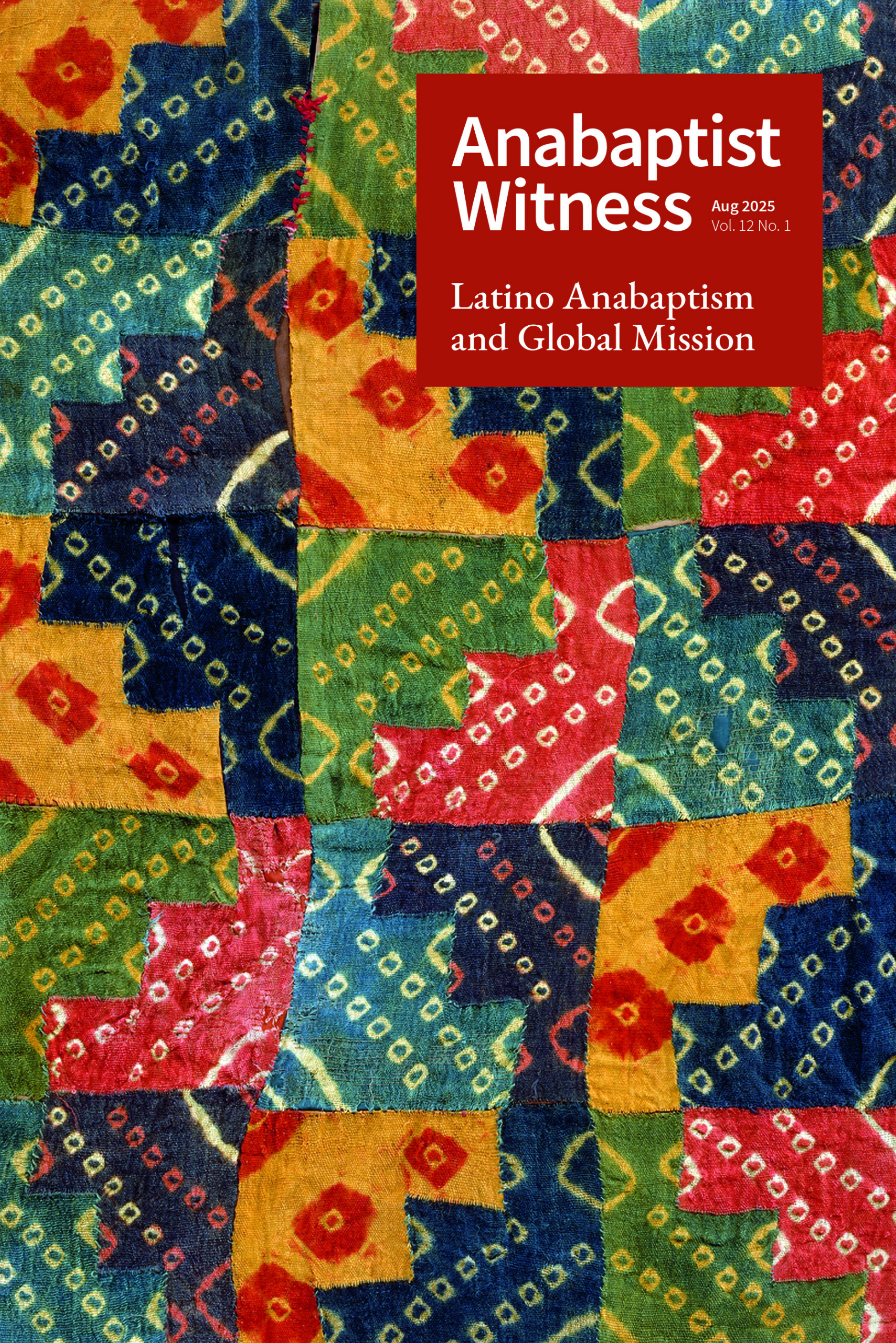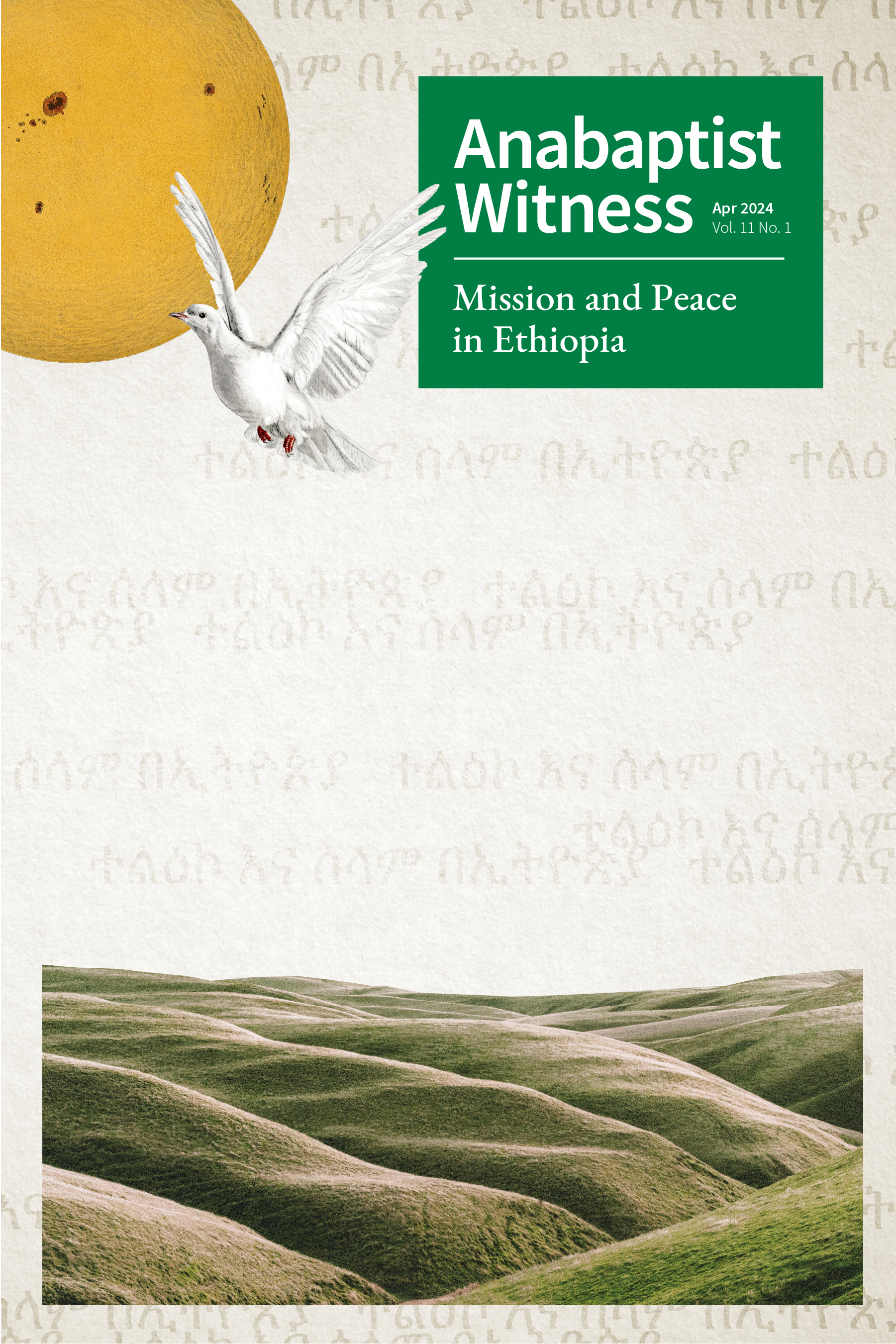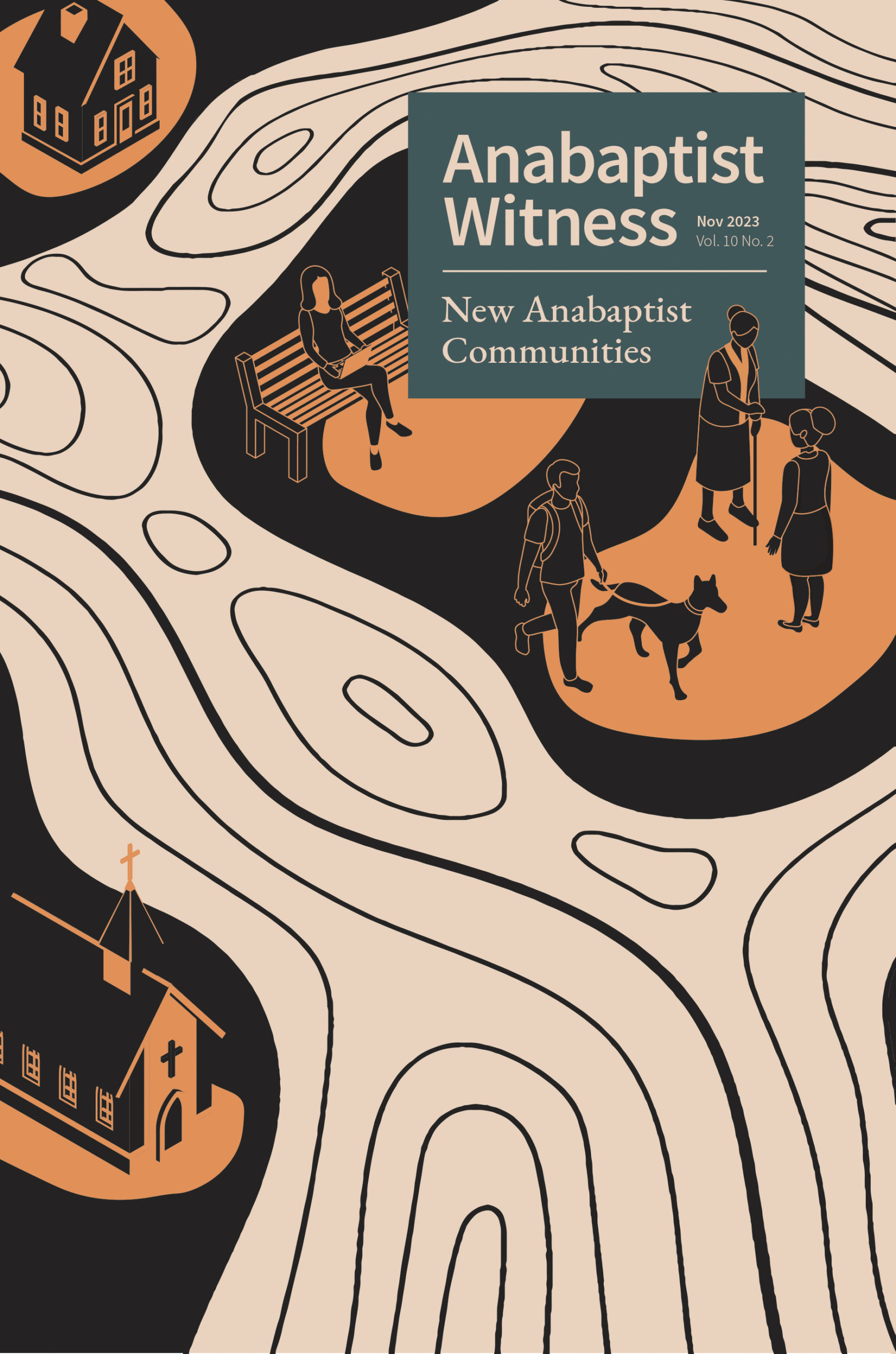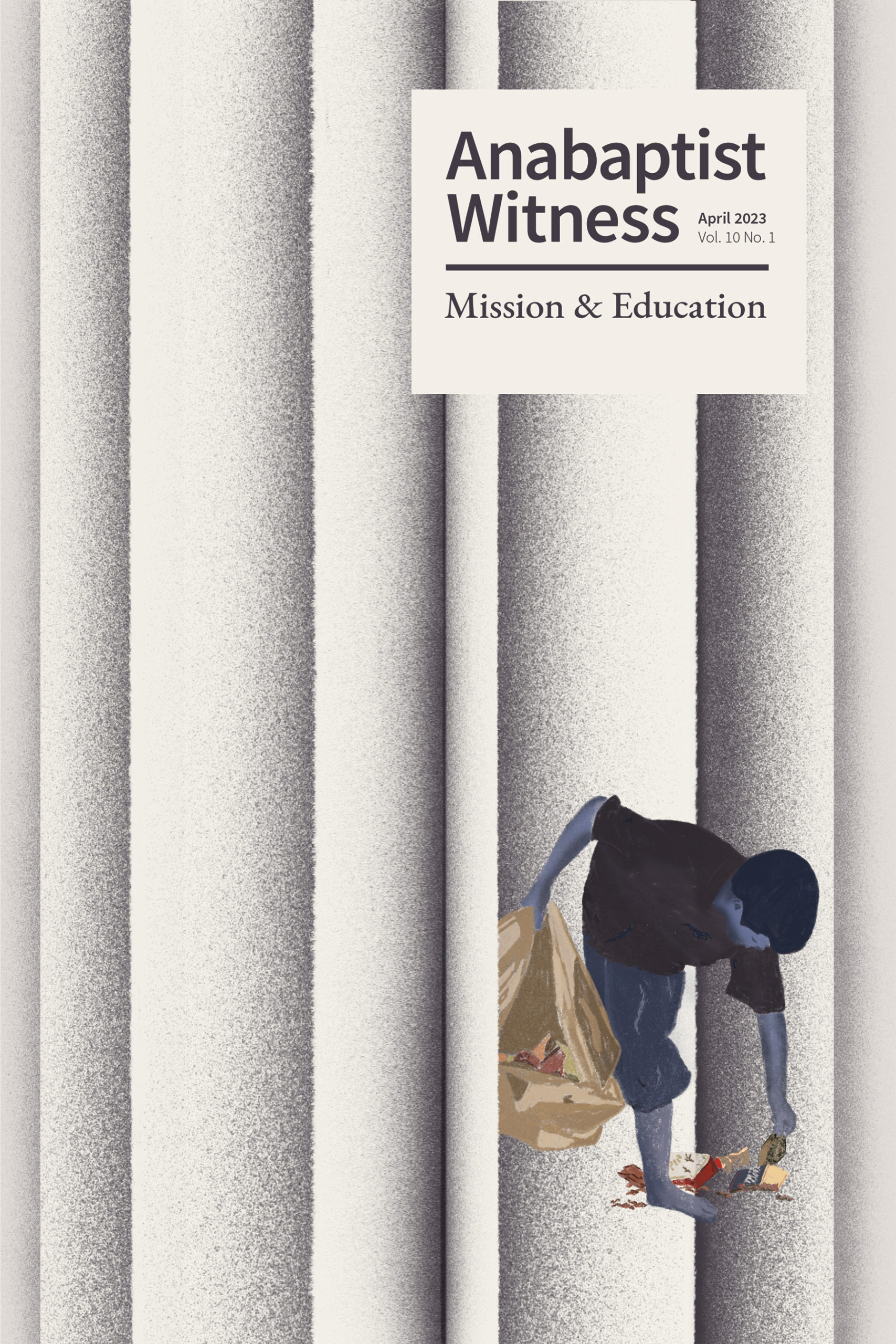Taste and See: Anabaptism, Food, and Mission
About This Issue Download this issue
Taste and See: Anabaptism, Food, and Mission
“It was God who invented dirt, onions and turnip greens; God who invented human beings, with their strange compulsion to cook their food; God who, at the end of each day of creation, pronounced a resounding “Good!” over his own concoctions. And it is God’s unrelenting love of all the stuff of this world that keeps it in being at every moment”.
– Robert Farrar Capon, The Supper of the Lamb: A Culinary Reflection
Episcopal priest Robert Farrar Capon eloquently writes of the relationships between theology, food, and life in his 1967 The Supper of the Lamb: A Culinary Reflection. Capon believes that food and cooking are not low subjects, somehow beneath our time and consideration, but worthy of astonishment, awe, and elaborate attention to detail. Even as Capon revels in the delight of food and its preparation, he contends that it is in gathering around the table that joy is made complete. It is there that we get to know others and have opportunity for worship. It is in the act of extending the table that we welcome Christ in our midst, through our friends, family, the weary, outcast, and the hungry. It is at the table that God is made known.
And it is in this extending of the table that we so often build and nurture relationships within and outside the church, and around the world. These relationships extend to those seated next to us, but also to those who planted the seeds, watered the plants, harvested the grain, and packed and shipped our produce. These relationships connect us to the animals we consume, and the farmers who care for them. These relationships even reach deep into the firm soil beneath our feet.
In this issue of Anabaptist Witness, we will travel the world and reflect together on how we have and might continue to witness to God’s reconciling and creative work through our relationships to food and those we share it with. We will explore history in the Anabaptist movement in the UK, and stories of constructive dialogue in Indonesia between Mennonite communities and Hezbollah. We will think about seed saving and how to create hospitality, of community kitchens and outreach. We might recall times of abundance, but also recognize that many go without. You will not only read about food in stories and articles, but also have the opportunity to visualize it—playing with the images that come to mind as you reflect on the paintings and poetry within, for what you have in your hands or on your computer screen is truly a savory feast.
Weaving personal narrative with an exploration of the history of food in Anabaptism, Andrew Francis opens the issue by telling how shared meals in the UK brought him and so many others to a rediscovery of Anabaptist values and literature—how they “ate [their] way into Anabaptism.” While others reflect on the power of food to unite, Lois Siemens examines through calligraphy how big divisions can come from small differences, as illustrated in a brief statement about Zwiebach found in the 1962 Mennonite Treasury of Recipes: “some prefer to dunk them, others believe dunking spoils the taste.”
Moving from Russian-Mennonite culture to Latin America, Elizabeth Miller documents the early history of the Mennonite Brethren churches in the Chocó region of Colombia, and records how these believers incorporated images from their daily lives, and primarily images of food, into their self-theologizing. The Chocoano Mennonite Brethren understood relief from hunger as part of the good news preached by Jesus, and included stories of finding food to eat in some of their conversion narratives.
The articles and creative reflections in this issue illustrate how deeply we are connected to that which sustains us. Even more basic than our hunger for daily bread is our thirst for and dependence on water. Reminding us that water runs through us all, poet and theologian Harold Recinos also recalls the power that places have to connect us with those who came before.
Agnes Chen and Paulus Hartono share a powerful story in which Gereka Kristen Muria Indonesia (GKMI) decided to help form an interfaith committee with a vision to transfer the turbulent city of Solo into a center for peace. This committee has supported food distribution and trained peace-builders. Their efforts have additionally increased communication over shared meals with Islamic paramilitary groups, resulting in the prevention and transformation of conflict.
Both of the next two pieces, a poem by Lois Siemens and a reflection by Kaylene Derksen, explore the importance of what can be passed from parent to child. “My Mother’s Mirror” provides a glimpse into Siemens’ rural childhood, of family circled together shelling peas; the author remembered this scene when she encountered shelves of canned produce in a cellar. Derksen also recalls her childhood and lessons remembered, this time in the presence of an empty bowl. She has found this object represents for her the worthy cost of hospitality, as modeled by her parents.
Sarah Werner examines how commitments to nonviolence and social nonconformity inform North American Mennonites in their food consumption habits and decisions. She presents Mennonite cookbooks and Oakleaf Mennonite Farm at Berea Mennonite Church (Atlanta, GA) as evidence that growing and eating food are sacred acts and ways of living out our faith.
Traveling next in our issue to India, Marlene Epp explores food rituals and finds similarities between the northern European tradition of making peppernuts and the Indian Mennonite women’s practice of making anarsa (a sweet, rice-based treat). She shares of the “human yearning” to express our faith in everyday life, a yearning that finds an outlet in connecting holidays with food practices. As with peppernut preparation, anarsa is usually made around Christmas, and there are a variety of recipes. Epp connects members of the Anabaptist-Mennonite church, particularly women, around the world through stories, suggesting that it is in table exchange—even of these sweets—that intercultural dialogue thrives best.
Just Food: Right to Food from a Faith Perspective is a collaboration between eighteen artists from around the world. The artists were divided into groups and asked to create two artistic responses to two texts: a human rights declaration paired with a passage from the Old Testament. The four pieces included in the print edition of this issue are by Gen Tsuboi, of Japan, and Alejandro Aranda, of Mexico. Tsuboi’s entries are a form of paper-cut art, kirie, and reflect on statements made by Mennonite Central Committee in the 1970s in the Resolution on the World Food Crisis, and passages from Daniel. Aranda’s two linocuts respond to United Nations statements and passages from Amos. The cover of this issue is also a part of the exhibit. That piece, by Rhonda Harder Epp, interacts with passages from Leviticus.
Anna Marie Geddert paints just as lively a picture as she shares the story of Jubilee Mennonite Church Community Kitchen, in Winnipeg, where on any given Tuesday afternoon you will find women from various cultures chatting and learning to cook wholesome food for their families, all while surrounded by youngsters running about. The Community Kitchen brings together church members and neighbors—immigrants, single moms, and those just looking to build community. Its organizers share the conviction that Jesus calls us to feed the crowds and to eat with our neighbors. They invite others to “Come, Cook with Us.”
Kate Wentland teaches and builds relationships in China. She, like many of the other authors, finds that relationships grow naturally when they involve preparing food together. Wentland explains how her Anabaptist commitment to nonviolence extends to animals and the earth, resulting in a commitment to vegetarianism. Rather than finding this commitment an obstacle as a frequent guest in homes, as so many warn, she finds that it allows families to serve her more simple and home-style meals, relieving them of the stress involved in hosting expensive and elaborate dinners. Her stories of eating simply illustrate how her commitment has opened doors for meaningful relationships, rather than being a hindrance.
The feast of writing and artwork continues with exclusive online submissions and on our blog. Please do send us an email with your thoughts or questions, photos or possible blog posts. We are always accepting submissions for consideration and we’d love to have you join the conversation.
Jamie Ross, Co-Editor
